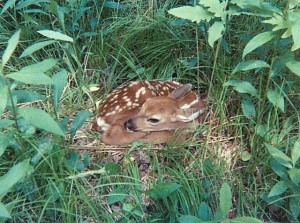ECOLOGICAL SERVICES
Hudson Highlands Environmental Consulting can provide a variety of ecological services, including:
Vegetation

- Tree Surveys
– Tagging and identification of tree species as may be required by a reviewing agency for development proposals. Often, planning boards and other agencies will require the location and identification of significant or “specimen” trees, which may be defined by a diameter at breast height (d.b.h.) typically starting at a minimum size ranging anywhere from 10 inches to 24 inches. The smaller the minimum size, the greater the number of trees which must be surveyed. The smaller size may make sense for project sites that are sparsely vegetated, but may be unreasonable for thickly forested sites. Accordingly, the services provided by HHEC go beyond the field work itself, and we are available to negotiate the actual parameters of the survey with the reviewing agency, potentially lowering the cost significantly. HHEC has been able to successfully negotiate parameters for the benefit of its clients, even where minimum sizes for surveys are set by Town Code. - Mapping of Ecological Associations – General mapping of habitat and cover types, often required under SEQRA.
- Endangered and Threatened Species – Field identification of state and federally listed endangered, threatened, and special concern vegetative species, often required under SEQRA.
Wildlife
- Wildlife Surveys and Habitat Assessment – General survey of observed species, and assessment of likely species (based on habitat and other criteria) for a project site, often required unde r SEQRA.
 Endangered and Threatened Species – Field identification of state and federally listed endangered, threatened, and special concern wildlife species, often required under SEQRA. HHEC can bring in specific experts as may be required where an issue regarding a particular species has been identified, i.e. timber rattlesnakes, Indiana bat, bog turtles, certain salamanders, etc. Often, these experts have often been able to either dismiss such concerns for a particular property, or to suggest creative solutions to accommodate the particular species, and allow development to proceed.
Endangered and Threatened Species – Field identification of state and federally listed endangered, threatened, and special concern wildlife species, often required under SEQRA. HHEC can bring in specific experts as may be required where an issue regarding a particular species has been identified, i.e. timber rattlesnakes, Indiana bat, bog turtles, certain salamanders, etc. Often, these experts have often been able to either dismiss such concerns for a particular property, or to suggest creative solutions to accommodate the particular species, and allow development to proceed.
